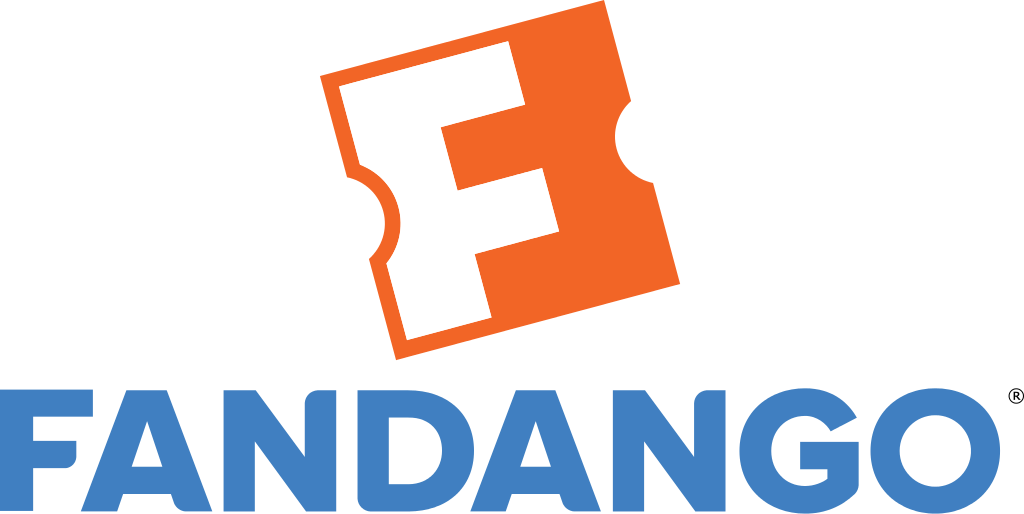# load packages
library(tidyverse) # for data wrangling and visualization
library(broom) # for formatting model output
library(ggformula) # for creating plots using formulas
library(scales) # for pretty axis labels
library(knitr) # for pretty tables
library(moderndive) # for house_price dataset
library(fivethirtyeight) # for fandango dataset
library(kableExtra) # also for pretty tables
library(patchwork) # arrange plots
# set default theme and larger font size for ggplot2
ggplot2::theme_set(ggplot2::theme_bw(base_size = 20))SLR: Transformations
Application exercise
Complete Exercises 0 and 1.
Computational set up
Data: house_prices
- Contains house sale prices for King County, which includes Seattle, from homes sold between May 2014 and May 2015
- Obtained from Kaggle.com
- Imported from the
moderndivepackage
Rows: 21,613
Columns: 21
$ id <chr> "7129300520", "6414100192", "5631500400", "2487200875", …
$ date <date> 2014-10-13, 2014-12-09, 2015-02-25, 2014-12-09, 2015-02…
$ price <dbl> 221900, 538000, 180000, 604000, 510000, 1225000, 257500,…
$ bedrooms <int> 3, 3, 2, 4, 3, 4, 3, 3, 3, 3, 3, 2, 3, 3, 5, 4, 3, 4, 2,…
$ bathrooms <dbl> 1.00, 2.25, 1.00, 3.00, 2.00, 4.50, 2.25, 1.50, 1.00, 2.…
$ sqft_living <int> 1180, 2570, 770, 1960, 1680, 5420, 1715, 1060, 1780, 189…
$ sqft_lot <int> 5650, 7242, 10000, 5000, 8080, 101930, 6819, 9711, 7470,…
$ floors <dbl> 1.0, 2.0, 1.0, 1.0, 1.0, 1.0, 2.0, 1.0, 1.0, 2.0, 1.0, 1…
$ waterfront <lgl> FALSE, FALSE, FALSE, FALSE, FALSE, FALSE, FALSE, FALSE, …
$ view <int> 0, 0, 0, 0, 0, 0, 0, 0, 0, 0, 0, 0, 0, 0, 0, 3, 0, 0, 0,…
$ condition <fct> 3, 3, 3, 5, 3, 3, 3, 3, 3, 3, 3, 4, 4, 4, 3, 3, 3, 4, 4,…
$ grade <fct> 7, 7, 6, 7, 8, 11, 7, 7, 7, 7, 8, 7, 7, 7, 7, 9, 7, 7, 7…
$ sqft_above <int> 1180, 2170, 770, 1050, 1680, 3890, 1715, 1060, 1050, 189…
$ sqft_basement <int> 0, 400, 0, 910, 0, 1530, 0, 0, 730, 0, 1700, 300, 0, 0, …
$ yr_built <int> 1955, 1951, 1933, 1965, 1987, 2001, 1995, 1963, 1960, 20…
$ yr_renovated <int> 0, 1991, 0, 0, 0, 0, 0, 0, 0, 0, 0, 0, 0, 0, 0, 0, 0, 0,…
$ zipcode <fct> 98178, 98125, 98028, 98136, 98074, 98053, 98003, 98198, …
$ lat <dbl> 47.5112, 47.7210, 47.7379, 47.5208, 47.6168, 47.6561, 47…
$ long <dbl> -122.257, -122.319, -122.233, -122.393, -122.045, -122.0…
$ sqft_living15 <int> 1340, 1690, 2720, 1360, 1800, 4760, 2238, 1650, 1780, 23…
$ sqft_lot15 <int> 5650, 7639, 8062, 5000, 7503, 101930, 6819, 9711, 8113, …Variables
- Outcome
price: the sale price in dollars
- Predictor
sqft_living: the square footage of the home
Recap: Fit the model
| term | estimate | std.error | statistic | p.value |
|---|---|---|---|---|
| (Intercept) | -43580.74 | 4402.69 | -9.90 | 0 |
| sqft_living | 280.62 | 1.94 | 144.92 | 0 |
- Write down the model:
- Model: \(\hat{\text{price}} = -43580.74 + 280.62\times\text{sqft_living}\)
- Interpret the slope and intercept in the context of this problem:
- Interpretation: If the square footage of the house increases by 1, the price increases by and average of $280.62 and a (theoretical) house with 0 square feet with cost -$43,580.74.
Recap: Fit the model

Recap: Model conditions
- Linearity: There is a linear relationship between the outcome and predictor variables
- Constant variance: The variability of the errors is equal for all values of the predictor variable
- Normality: The errors follow a normal distribution
- Independence: The errors are independent from each other
How should we check these assumptions?
Recap: Residual Histogram

Recap: QQ-Plot of Residuals

Recap: Residuals vs. Fitted Values

Are model conditions satisfied?
- Linearity:
❓ - Constant variance:
❌ - Normality:
❌ - Independence:
✅
What to do when regression conditions are violated
Examples:
- Lack of normality in residuals
- Patterns in residuals
- Heteroscedasticity (non-constant variance)
- Outliers: influential points, large residuals
Transformations
Data Transformations
Can be used to:
- Address nonlinear patterns
- Stabilize variance
- Remove skewness from residuals
- Minimize effects of outliers
Common Transformations
For either the response \(Y\) or predictor \(X\):
- Logarithm \(Z \to \log(Z)\)
- Note: “log” means “log base \(e\)”
- Square Root \(Z \to \sqrt{Z}\)
- Exponential \(Z \to e^Z\)
- Power functions \(Z \to Z^2, Z^3, Z^4, \ldots\)
- Reciprocal \(Z \to 1/Z\)
General Approach
- Fix non-constant variance be transforming \(Y\) (do this first)
- Fan Pattern: Log-Transform \(Y\)
- Fix non-linearity by transforming \(X\)
Why a Log Transformation?
Some relationship are multiplicative (not linear)
Example: Area of a circle
\[ \begin{aligned} A &= \pi r^2 \text{ (not linear)}\\ \log(A) &= \log(\pi r^2) = \log(\pi) + 2\log(r)\\ \log(A) &= \beta_0 + \beta_1\times \log(r)\\ \implies & \log(A) \text{ is a linear function of } \log(r) \end{aligned} \]
Look for:
- Increasing variability in scatterplot
- Strongly right-skewed residual distributions
- Complete Exercise 2
Fixing non-linearity
Many departures from linearity can be solved with power transformations (e.g. \(X^{power}\))
- For technical reasons, \(power = 0\) corresponds to \(\log\)
Concave down pattern \(\Rightarrow\) transform down (i.e. \(power < 1\))
- \(\log\) is typically a good first choice
Concave up pattern \(\Rightarrow\) transform up (i.e. \(power > 1\))
Complete Exercises 3-5.
Back to house_sales
Code
p1 <- gf_point(price ~ sqft_living, data = house_prices,
alpha = 0.25, size = 0.01) |>
gf_smooth(method = "lm", color = "red") |>
gf_labs(x = "Square Footage",
y = "Sale Price") |>
gf_refine(scale_y_continuous(labels = label_dollar()),
scale_x_continuous(labels = label_number()))
p2 <- gf_point(log(price) ~ sqft_living, data = house_prices,
alpha = 0.25, size = 0.01) |>
gf_smooth(method = "lm", color = "red") |>
gf_labs(x = "Square Footage",
y = "log(Sale Price)") |>
gf_refine(scale_y_continuous(labels = label_dollar()),
scale_x_continuous(labels = label_number()))
p3 <- gf_point(price ~ log(sqft_living), data = house_prices,
alpha = 0.25, size = 0.01) |>
gf_smooth(method = "lm", color = "red") |>
gf_labs(x = "log(Square Footage)",
y = "Sale Price") |>
gf_refine(scale_y_continuous(labels = label_dollar()),
scale_x_continuous(labels = label_number()))
p4 <- gf_point(log(price) ~ log(sqft_living), data = house_prices,
alpha = 0.25, size = 0.01) |>
gf_smooth(method = "lm", color = "red") |>
gf_labs(x = "log(Square Footage)",
y = "log(Sale Price)") |>
gf_refine(scale_y_continuous(labels = label_dollar()),
scale_x_continuous(labels = label_number()))
(p1 + p2)/ (p3 + p4)
Fitting Transformed Models
| term | estimate | std.error | statistic | p.value |
|---|---|---|---|---|
| (Intercept) | 12.2184641 | 0.0063741 | 1916.8830 | 0 |
| sqft_living | 0.0003987 | 0.0000028 | 142.2326 | 0 |
\[ \begin{aligned} \log(Y) &= 12.22 + 3.99\times 10^{-4}\times X\\ Y &= e^{12.22 + 3.99\times 10^{-4}\times X}\\ &= 202805\times e^{3.99\times 10^{-4}\times X} \end{aligned} \]
loglog_model <- lm(log(price) ~ log(sqft_living), data = house_prices)
tidy(loglog_model) |> kable()| term | estimate | std.error | statistic | p.value |
|---|---|---|---|---|
| (Intercept) | 6.729916 | 0.0470620 | 143.0011 | 0 |
| log(sqft_living) | 0.836771 | 0.0062233 | 134.4587 | 0 |
\[ \begin{aligned} \log(Y) &=6.73 + 0.837\times \log(X)\\ \log(Y) &= \log(e^{6.73}) + \log(X^{0.837})\\ Y &= 873.15\times X^{0.837} \end{aligned} \]
Residuals Histograms
Code
lp_aug <- augment(logprice_model)
ll_aug <- augment(loglog_model)
p1 <- gf_histogram(~.resid, data = lp_aug, bins = 100) |>
gf_labs(x = "Residual",
y = "Count",
title = "Log Price Residuals")
p2 <- gf_histogram(~.resid, data = ll_aug, bins = 100) |>
gf_labs(x = "Residual",
y = "Count",
title = "Log-Log Residuals")
(p1 + p2)
QQ-Plots of Residuals

Residuals vs. Fitted Values
Code
p1 <- gf_point(.resid ~ .fitted, data = lp_aug,
alpha = 0.25, size = 0.01) |>
gf_hline(yintercept = 0, linetype = "dashed") |>
gf_labs(
x = "Fitted value", y = "Residual",
title = "Log Price Model"
)
p2 <- gf_point(.resid ~ .fitted, data = ll_aug,
alpha = 0.25, size = 0.01) |>
gf_hline(yintercept = 0, linetype = "dashed") |>
gf_labs(
x = "Fitted value", y = "Residual",
title = "Log-Log Model"
)
p1 + p2
A note on evaluation
If you are computing your evaluation metrics (e.g. \(R^2\) or RMSE), you should transform your predictions BACK to their original scale, especially if you’re trying to choose the best model
- Why do we need to undo the transformation for evaluation metrics by not residuals plots?
- Why don’t we need to worry about the predictors?
Outliers
Types of “Unusual” Points in SLR
- Outlier: a data point that is far from the regression line
- Influential point: a data point that has a large effect on the regression fit
- How do we measure “far”?
- How do we measure “effect on the fit”?
Detecting Unusual Cases: Overview
- Compute residuals
- “raw”, standardized, studentized
- Plots of residuals
- boxplot, scatterplot, normal plot
- Leverage
- unusual values for the predictors
Example: Movie scores
- Data behind the FiveThirtyEight story Be Suspicious Of Online Movie Ratings, Especially Fandango’s
- In the fivethirtyeight package:
fandango - Contains every film released in 2014 and 2015 that has at least 30 fan reviews on Fandango, an IMDb score, Rotten Tomatoes critic and user ratings, and Metacritic critic and user scores




Data prep
- Rename Rotten Tomatoes columns as
criticsandaudience - Rename the dataset as
movie_scores
Example: Movie Scores

Boxplot of Residuals
- Dots (outliers) indicate data points more than 1.5 IQRs above (or below) quartiles
Standardized Residuals
- Recall: Z-scores
- Fact: If \(X\) has mean \(\mu\) and standard deviation \(\sigma\), then \((X-\mu)/\sigma\) has mean 0 and standard deviation 1
- For residuals: mean 0 and standard deviation \(\hat{\sigma}_\epsilon\)
- Standardized residuals: \(\frac{y_i-\hat{y}_i}{\hat{\sigma}_\epsilon}\)
- Look for values beyond \(\pm 2\) or \(\pm 3\)
Recap: Augment function
| audience | critics | .fitted | .resid | .hat | .sigma | .cooksd | .std.resid |
|---|---|---|---|---|---|---|---|
| 86 | 74 | 70.69768 | 15.302321 | 0.0081597 | 12.51615 | 0.0061774 | 1.2254688 |
| 80 | 85 | 76.40313 | 3.596866 | 0.0112688 | 12.57830 | 0.0004743 | 0.2885034 |
| 90 | 80 | 73.80975 | 16.190255 | 0.0096283 | 12.50817 | 0.0081839 | 1.2975389 |
| 84 | 18 | 41.65173 | 42.348272 | 0.0207618 | 12.06226 | 0.1234982 | 3.4131653 |
| 28 | 14 | 39.57702 | -11.577018 | 0.0234805 | 12.54373 | 0.0104964 | -0.9343768 |
| 62 | 63 | 64.99222 | -2.992225 | 0.0068844 | 12.57943 | 0.0001988 | -0.2394750 |
Example: Movie Scores

(Externally) Studentized Residuals
- Concern: An unusual value may exert great influence on the fit
- Its residual might be underestimated because the model “moves” a lot to fit it
- The standard error may also be inflated due to the outlier error
- Studentize: Fit the model without that case, then find new \(\hat{\sigma}_\epsilon\)
Example: Movie Scores

What to do with an outlier?
- Look into it
- If something is unusual about it and you can make a case that it is not a good representation of the population you can throw it out
- If not and the value is just unusual, keep it
Influence vs. Leverage
- High Influence Point: point that DOES impact the regression line
- High Leverage Point: point with “potential” to impact regression line because \(X\)-value is unusual
High Leverage, Low Influence

High Leverage, High Influence

Low Leverage, Low Influence

Low Leverage, High Influence

Low Leverage, High Influence

Recap
- Transformations
- Transform \(Y\) to fix non-constant variance (and non-normality)
- Transform \(X\) to fix non-linearity
- Power transformations are powerful (concave up/drown \(\Rightarrow\) power up/down)
- logs allow us to model a lot of non-linear relationships with a linear model
- Outliers
- Leverage
- Influence
- Used plots of residuals, standardized residuals, and studentized residuals to diagnose outliers
- Spend the rest of class working on Exercise 6.

